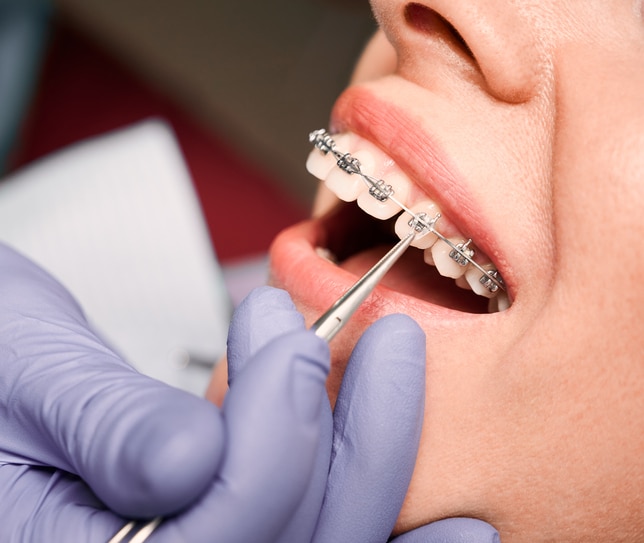Comprehensive Guide to Orthodontics Procedures for Dealing With Dental Imbalances
In the realm of orthodontics, the trip to accomplishing a flawlessly lined up smile involves a myriad of treatments tailored to correct oral misalignments. From standard braces to unnoticeable aligners and even surgical options, the area of orthodontics provides a variety of remedies to address varying degrees of oral abnormalities. Recognizing the complexities of each procedure, including their systems, advantages, and possible drawbacks, is vital in making educated decisions about one's orthodontic treatment. As we navigate with the thorough overview to orthodontic treatments for correcting dental imbalances, the complex information of each approach will unfold, clarifying the course towards a harmonious and practical dental positioning.
Orthodontic Procedures Summary

Normal adjustments and tracking are crucial parts of orthodontic therapy to make certain progress is on track and to make any essential modifications along the method. By undertaking orthodontic procedures, clients can not just achieve a straighter grin yet additionally improve their general dental health and function.
Typical Braces: Just How They Work
When taking into consideration orthodontic therapies for dental misalignments, standard dental braces stick out as a time-tested technique for fixing teeth placing. Conventional dental braces are composed of brackets, wires, and bands that collaborate to use constant stress on the teeth, progressively moving them right into the preferred alignment. The braces are affixed to the teeth making use of a special adhesive, and the cords are threaded through the braces. By adjusting the stress of the wires, orthodontists can regulate the direction and pressure related to each tooth, leading them into correct alignment over time.
As stress is used to the teeth through the dental braces, the bone surrounding the teeth is improved to sustain the new tooth settings. Individuals will need regular changes at the orthodontist's workplace to make sure the dental braces continue to use the proper pressure for reliable teeth motion.
Unnoticeable Aligners: Benefits And Drawbacks
These clear, personalized trays are basically unnoticeable when worn, making them an enticing choice for people seeking a more aesthetically pleasing orthodontic therapy. People can get rid of the aligners before consuming or brushing their teeth, lowering the danger of food getting important source stuck in the home appliance and streamlining the cleaning procedure.

Surgical Orthodontic Options
Surgical interventions in orthodontics why dentistry present practical choices for attending to complicated dental misalignments that may not be effectively dealt with with conventional orthodontic treatments. While invisible aligners and conventional braces can deal with several orthodontic concerns, certain situations call for surgical intervention to achieve optimal outcomes. Surgical orthodontic alternatives are commonly advised for extreme malocclusions, considerable jaw inconsistencies, and situations where the underlying bone structure needs modification to attain appropriate positioning.
One common medical orthodontic treatment is orthognathic surgical procedure, which involves rearranging the jaws to remedy practical issues such as trouble talking or chewing. This surgery is usually done in partnership with an orthodontist who aids line up the teeth prior to and after the treatment. Surgical orthodontics may additionally include procedures to reveal impacted teeth, get rid of excess periodontal tissue, or reshape the jawbone to develop a more unified face profile.
Prior to taking into consideration medical orthodontic options, people undertake a detailed examination to establish the necessity and possible advantages of such interventions. cumming orthodontist. While surgical treatment may appear complicated, it can substantially improve both the feature and appearances of the smile in situations where conventional orthodontic therapies fall short
Retainers and Post-Treatment Treatment

Failing to conform with post-treatment treatment guidelines can result in regression, where the teeth slowly relocate back in the direction of their original placements. Consistent retainer wear, great dental hygiene, and routine oral exams are important for maintaining the results attained via orthodontic surgical procedure define dentist and making certain the lasting security of the fixed dental alignment.
Verdict
In final thought, orthodontic treatments use various options for fixing dental misalignments. Surgical orthodontic choices are offered for a lot more serious misalignments. Generally, orthodontic procedures can effectively enhance oral health and wellness and visual appearance.
As we browse via the thorough overview to orthodontic procedures for fixing dental misalignments, the intricate information of each method will certainly unfold, dropping light on the course toward a useful and harmonious dental placement. - invisalign
One of the most usual orthodontic treatments is the usage of braces, which are composed of metal brackets and cables that use gentle stress to progressively shift teeth into the preferred placement.When thinking about orthodontic therapies for dental imbalances, traditional braces stand out as a reliable method for dealing with teeth positioning. Furthermore, unnoticeable aligners may not be appropriate for complicated orthodontic concerns that call for more substantial teeth movement, as they are normally advised for moderate to modest situations. Retainers are personalized orthodontic tools made to hold teeth in their fixed placements after the conclusion of orthodontic therapy.